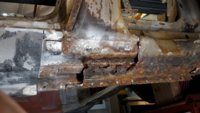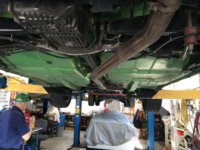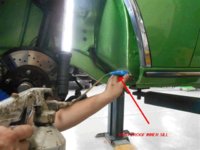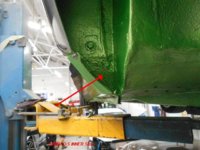Gents,
This has bothered me for a couple weeks. The new rocker panels from W&N have a curved lip/ledge at the bottom. This seems to me a perfect place for mud and debris to collect, then block the drain holes and begin the rotting process... Do I cut this off?
Here's a picture, please excuse the unground spot welds

If anyone has a picture of how they finished this off, I would be grateful.
Ed Z
This has bothered me for a couple weeks. The new rocker panels from W&N have a curved lip/ledge at the bottom. This seems to me a perfect place for mud and debris to collect, then block the drain holes and begin the rotting process... Do I cut this off?
Here's a picture, please excuse the unground spot welds
If anyone has a picture of how they finished this off, I would be grateful.
Ed Z





